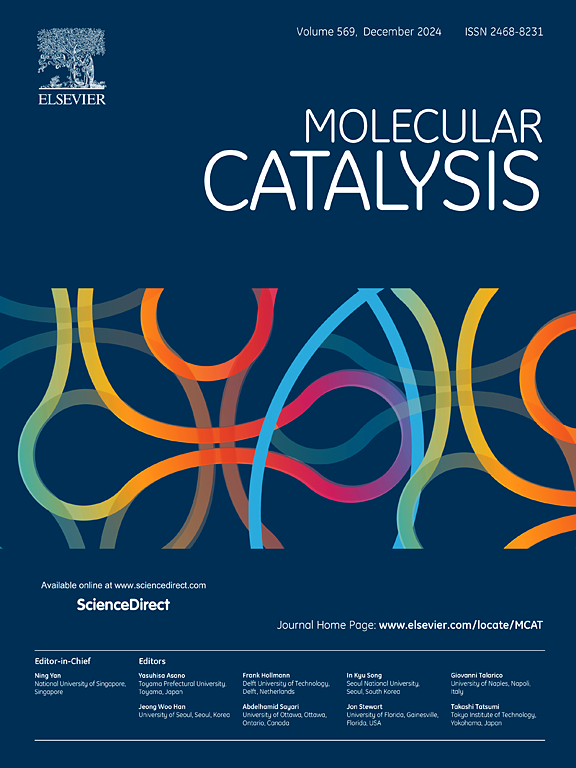在Ni泡沫上快速合成掺ce的WSe2纳米花以改善析氢反应
IF 4.9
2区 化学
Q2 CHEMISTRY, PHYSICAL
引用次数: 0
摘要
硒化钨(WSe2)由于其优异的催化性能引起了人们的广泛关注;它已成为电解水析氢领域的重要催化剂。然而,硒化钨的性能仍然受到活性位点不足的限制。目前,掺杂稀土元素是增加活性边位从而显著提高电导率的重要方法。在本文中,我们采用一锅溶剂热法在泡沫镍(NF)衬底上原位生长掺杂ce的WSe2纳米材料。适量的Ce掺杂显著提高了Ce- wse2在HER上的催化性能。通过修饰WSe2的形貌和电子结构,进一步增强其析氢反应(HER)的催化活性。在1 M KOH溶液中,8% Ce-WSe2/NF在10 mA cm-2下具有较低的过电位和Tafel斜率,分别为82 mV和88.2 mV dec - 1,与WSe2相比具有显著的催化性能。此外,电催化剂表现出优异的稳定性,在10 mA cm-2的电流密度下,在24小时的连续催化反应中只有很小的变化。这项工作为提高wse2基催化剂的HER活性位点提供了独特的见解。本文章由计算机程序翻译,如有差异,请以英文原文为准。

Facile synthesis of Ce-doped WSe2 nanoflowers on Ni foam for improved hydrogen evolution reaction
Tungsten selenide (WSe2) has caused worthwhile concern due to its excellent catalytic properties; it has become an important catalyst in the field of hydrogen precipitation from electrolyzed water. However, tungsten selenide performance remains restricted by insufficient active sites. At present, doping with rare earth elements is an important method to increase the active edge sites and thus significantly improve the electrical conductivity. In this text, we have employed a one-pot solvothermal method to in situ grow Ce-doped WSe2 nanomaterials on the nickel foam (NF) substrate. The catalytic performance on HER of Ce-WSe2 was significantly improved due to the appropriate amount of doped Ce. By modifying the morphology and electronic structure of WSe2, its hydrogen evolution reaction (HER) catalytic activity is further enhanced. In the 1 M KOH solution, 8 %Ce-WSe2/NF possesses lower overpotentials and Tafel slopes of 82 mV and 88.2 mV dec‑1 at 10 mA cm-2, which shows a significant catalytic performance compared with WSe2. Moreover, the electrocatalyst showed excellent stability with only minor variations over 24 h of continuous catalyst reaction at a current density of 10 mA cm-2. This job provides a distinct insight into increasing HER active site for WSe2-based catalysts.
求助全文
通过发布文献求助,成功后即可免费获取论文全文。
去求助
来源期刊

Molecular Catalysis
Chemical Engineering-Process Chemistry and Technology
CiteScore
6.90
自引率
10.90%
发文量
700
审稿时长
40 days
期刊介绍:
Molecular Catalysis publishes full papers that are original, rigorous, and scholarly contributions examining the molecular and atomic aspects of catalytic activation and reaction mechanisms. The fields covered are:
Heterogeneous catalysis including immobilized molecular catalysts
Homogeneous catalysis including organocatalysis, organometallic catalysis and biocatalysis
Photo- and electrochemistry
Theoretical aspects of catalysis analyzed by computational methods
 求助内容:
求助内容: 应助结果提醒方式:
应助结果提醒方式:


